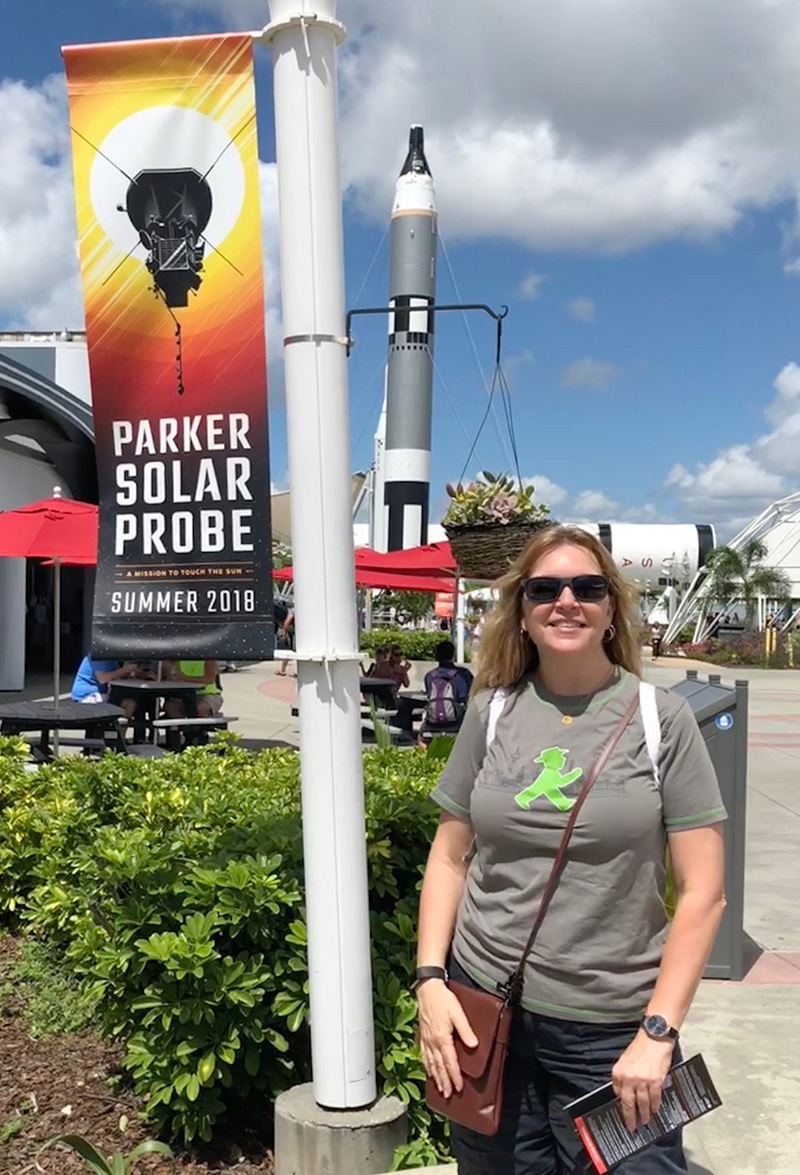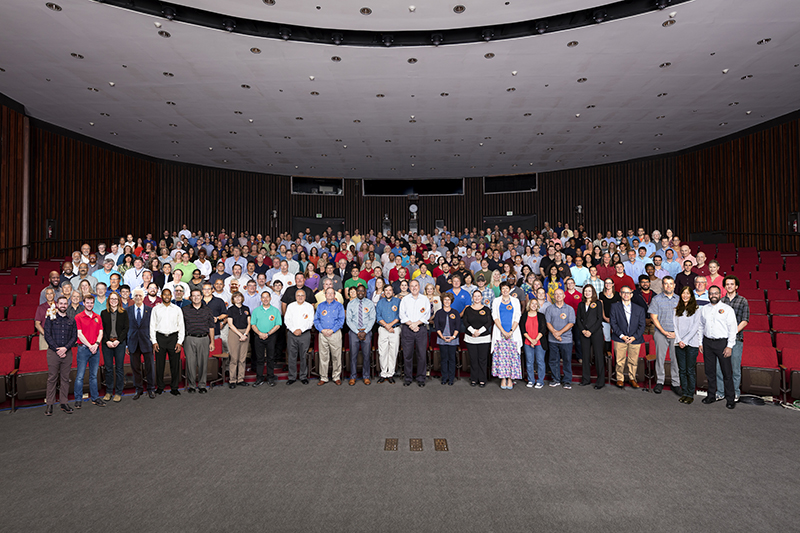News CenterNews Archive
Launch Memories
Posted on August 12, 2021
A Transformative Mission
Christina Cohen
Parker Solar Probe Science Team Co-investigator
California Institute of Technology
From my grad student days and throughout much of my career, it seemed like a solar probe mission had been the “just out of reach” wish. Despite the wonderful progress in understanding the solar wind and energetic particles from observations made mostly near 1 astronomical unit – the average distance between Earth and the Sun -- it has always been clear that making in-situ measurements very close to the Sun was desperately needed.

Christina Cohen at Kennedy Space Center for Parker Solar Probe’s launch in 2018.
Different visions of a solar probe mission emerged over the years, each attempting to balance scientific possibilities with engineering difficulties. After getting as far as NASA convening a panel to select instruments, only to return to another concept study, I thought such a mission might never occur in my career. Yet thanks to some truly inspirational spacecraft technology development, not only was the mission realized – and well before the end of my career! -- but its multi-orbit design and ultimate low perihelion (close-approach) distance to the Sun is among the best scientific formations considered over the decades.
I feel very lucky to be a part of what is already an historic mission, probing a region of the heliosphere for the first time and making the discoveries that inevitably come with such exploration. However, the mission has two other unique aspects that inspire me and clearly speak to a successful future for our field. The first is the large number of women involved in the mission, in a variety of roles spanning engineering, science and management. The second is the involvement of many young scientists, often in roles of substantial responsibility. Parker Solar Probe is a transformative mission, both in terms of the impact it has already had on our scientific understanding of the solar wind, particle acceleration and the structure and dynamics of the inner heliosphere, and the impact it will have on the careers of the scientists involved. This is especially true for the younger scientists, and I’m proud that the project was forward looking in the intentional inclusion of our next generation.
The Johns Hopkins Applied Physics Laboratory celebrated Women's History Month in 2018 with a look at a group of APL women key to the success of NASA's Parker Solar Probe. Watch it here.

Composite image of the Parker Solar Probe team at the Johns Hopkins Applied Physics Laboratory. The team has several women involved in the mission, in a variety of roles spanning engineering, science and leadership, as well as numerous young scientists.
- The Promise of Parker
- A Team that Inspires
- Shaping a Mission
- The People Behind the Mission
- Designing an Instrument
- A Memorable Day for a Resilient Team
- Through the Camera's Eye
- Seeing Was Believing
- The First Maneuver
- A Transformative Mission
- My Parker Solar Probe 'Family'
- Sharing the Parker Story
- 'Growing Up' with Parker Solar Probe